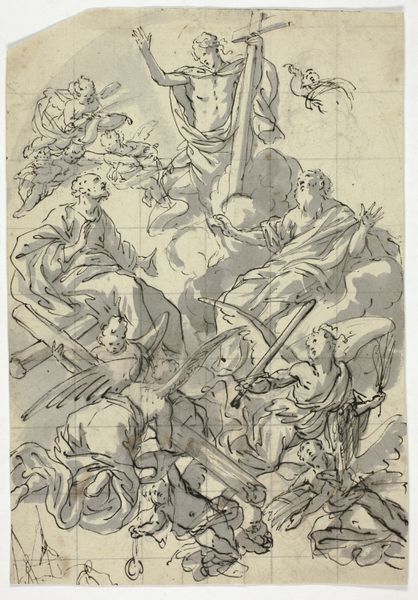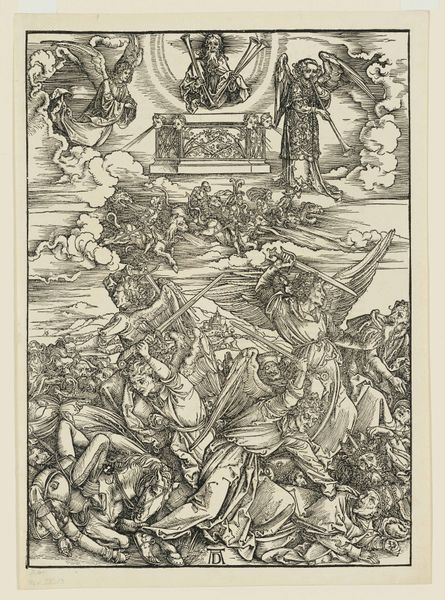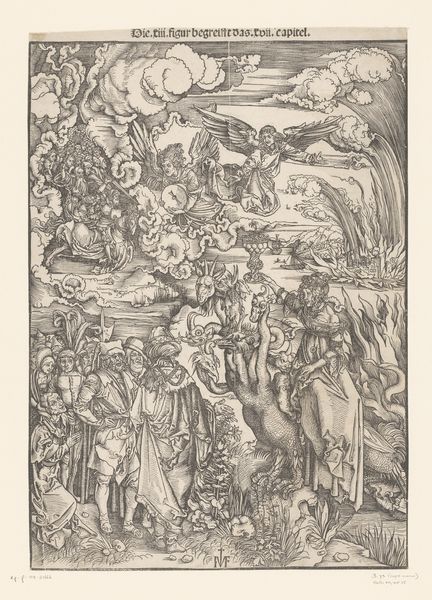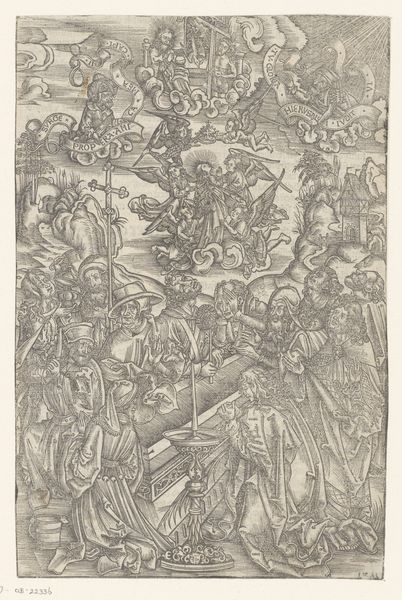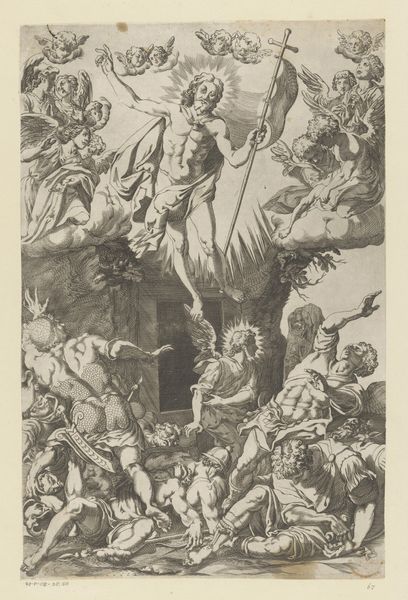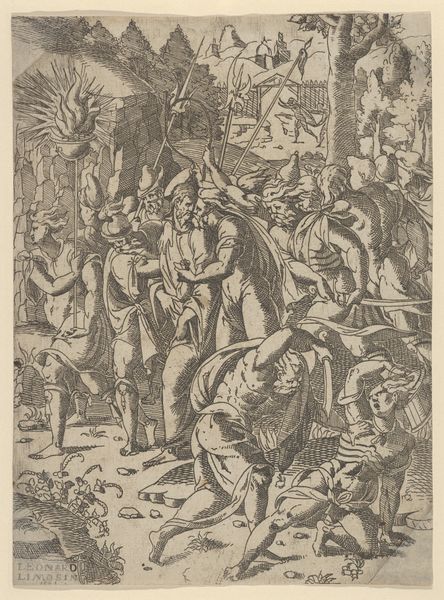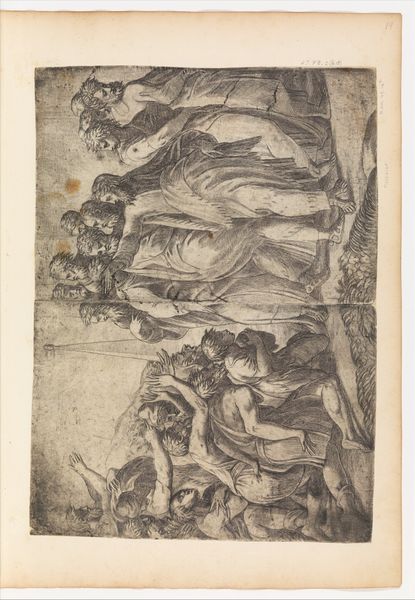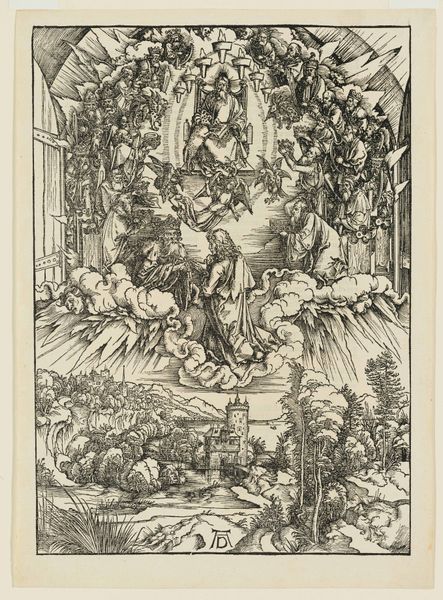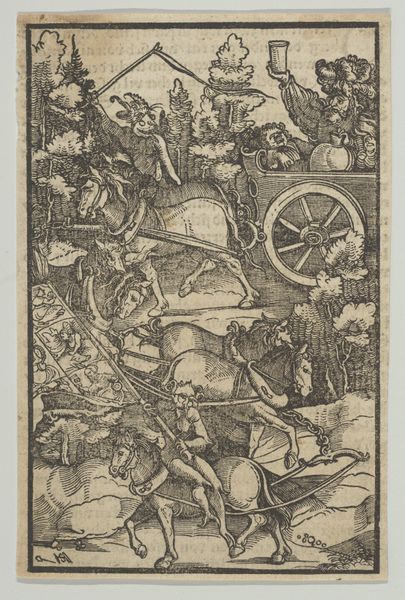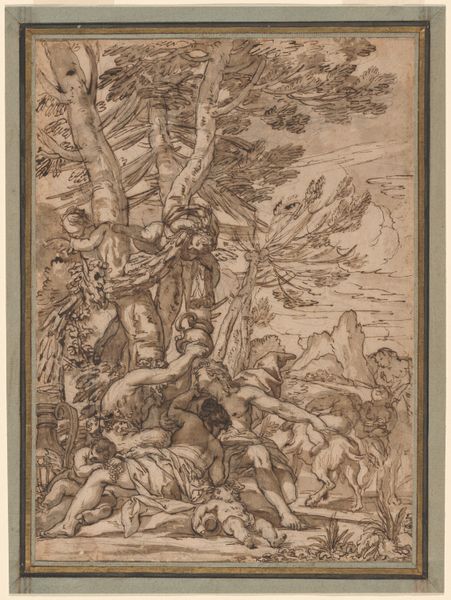
drawing, print, paper, ink, engraving
#
drawing
#
narrative-art
#
baroque
# print
#
pen sketch
#
figuration
#
paper
#
ink
#
pen-ink sketch
#
pen work
#
history-painting
#
engraving
Dimensions: height 358 mm, width 286 mm
Copyright: Rijks Museum: Open Domain
Editor: Here we have Andrea Andreani's "Christelijke Helden" from 1610, currently held at the Rijksmuseum. It's an engraving, so ink on paper. The composition is so dense; the figures seem to swarm the page. How would you interpret this piece, particularly from a material standpoint? Curator: The immediate impact stems from the *means* of production, doesn’t it? An engraving isn’t a painting—it’s a reproducible image, making it instantly more accessible. It brings images of Christian heroes to a broader audience. Consider the labor: the painstaking process of carving into a block, each line deliberate, meant to be multiplied and disseminated. How does that change our understanding of these heroes, compared to, say, a unique, commissioned oil painting? Editor: It definitely democratizes the image, I suppose. Would the accessibility influence the perception of those Christian figures at the time? Curator: Absolutely. Think about it – the proliferation of these images fosters a different kind of relationship. Are they now icons for the masses, or commodities traded, sold, and collected? How does this potentially strip the divine from the representation? Editor: I see what you mean! It's less about pure reverence and perhaps more about the circulation and consumption of religious ideology through a mass-produced object. That engraving process really reshapes how we understand it. Curator: Precisely. The materiality—the ink, the paper, the act of printing—isn't just a neutral vehicle for religious storytelling; it's integral to understanding the artwork’s impact on 17th-century society. Editor: That's fascinating. I never really thought about religious art as a commodity, but it totally makes sense considering the method of production. Curator: And seeing that link between material, labor, and cultural distribution offers us fresh eyes, I think, in how we think of even supposedly transcendental subjects.
Comments
No comments
Be the first to comment and join the conversation on the ultimate creative platform.

